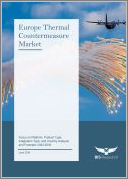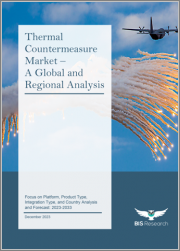
|
시장보고서
상품코드
1761742
세계의 첨단 반도체 패키징용 열 관리 시스템 및 재료 시장(2026-2036년)The Global Market for Thermal Management Systems and Materials for Advanced Semiconductor Packaging 2026-2036 |
||||||
세계의 첨단 반도체 패키징용 열 관리 시스템 및 재료 시장은 전력 밀도의 끊임없는 향상과 기존의 2D 패키징에서 혁신적인 2.5D/3D 집적 아키텍처로의 전환으로 폭넓은 반도체 에코시스템 중 가장 급성장하고 있는 부문 중 하나입니다. 이 시장에는 열 인터페이스 재료, 액체 냉각 시스템, 고급 히트 스프레더, 차세대 컴퓨팅 성능을 가능하게 하는 그래핀 기반 솔루션 및 마이크로플루이딕스 냉각과 같은 신기술이 포함됩니다.
시장 규모 예측에서는 2036년까지 폭발적인 성장이 예상됩니다. 이는 열관리 요구 증가와 기존의 접근법보다 훨씬 높은 가격 설정이 가능한 프리미엄 열 솔루션의 채택을 반영합니다. 기존의 열 관리에서 첨단 솔루션으로의 전환은 기술의 고도화와 성능의 프리미엄화를 통해 금액 증가가 수량 증가를 크게 능가하는 시장 발전를 창출합니다.
열 표면 재료는 가장 큰 시장 부문이 되어 기존의 열 그리스에서 기존 재료에 비해 열전도율을 10-100배 향상시킬 수 있는 액체 금속, 그래핀 복합재료, 다이아몬드 강화 솔루션 등의 첨단 재료로 진화하고 있습니다. 액체 냉각 기술은 고성능 컴퓨팅 및 AI 응용 분야에서 공기 냉각 능력을 초과하는 열 설계 출력 증가로 인해 가장 빠르게 성장하는 시장 부문입니다. 직접 투 칩 냉각은 시장의 주도권을 유지하면서 액침 냉각과 미세 유체 냉각이 새로운 기회가되고 있습니다.
데이터센터와 고성능 컴퓨팅은 주요 시장입니다. 자동차 전자는 전기자동차의 열 관리 요구 사항이 첨단 냉각 기술의 채택을 촉진하고 급성장하는 부문이며, 소비자 전자는 소형화와 성능 강화의 동향을 통해 안정적인 성장을 유지하고 있습니다. 점진적인 개선을 통해 마이크로플루이딕스역학, 첨단재료, 통합냉각솔루션 등의 혁신적인 접근방식에 대한 명백한 진보를 보여주고 있습니다.
2036년까지 시장 전망은 AI 가속화, 3D 패키징 채택, 자동차 전기 등의 기본적인 산업 동향이 뛰어난 열 관리 기능에 대한 질리지 못한 수요를 낳고 강력한 성장이 계속되고 있음을 보여줍니다.
본 보고서에서는 세계의 첨단 반도체 패키징용 열 관리 시스템 및 재료 시장에 대해 조사 분석하여 열관리 기술의 진화, 2036년까지 시장 규모와 예측, 경쟁 구도, 진입기업에 대한 전략적 제안 등의 정보를 제공합니다.
목차
제1장 주요 요약
- 첨단 반도체 패키징 - 2D 아키텍처에서 첨단 2.5D/3D 통합 기술로
- 과제
- TSV의 성능
- 수평 방향에서 수직 방향으로의 전력 공급의 이행
- TIM1 용도를 위한 열 표면 재료의 선택
- HPC용 냉각 기술
제2장 소개
- 열 설계 전력(TDP)
- HPC 칩의 첨단 반도체 패키징 기술
- GPU의 2.5D/3D 패키징
- GPU의 평면 다이 패키징 분야의 진화
- 고출력 첨단 패키징의 열 관리
제3장 2.5D/3D 첨단 반도체 패키징 기술
- 서론
- 최신 반도체 패키징 기술
- 첨단 반도체 패키징 기술의 최적화
- 상호접속 기술
- 2.5D 패키징
- 범핑 기술
- 제조 수율
- 비용 분석
- 기판 기술의 진화(실리콘 vs. 유기 vs. 유리)
- 첨단 패키징의 조립과 검사의 과제
제4장 전력 관리
- 서론
- 전력 공급 시스템
- HPC 칩의 생태계
- 첨단 전력 공급 네트워크(PDN)
- 전원 노이즈
- 동적 전압·주파수 스케일링(DVFS)
- 파워 게이팅
- 클럭 게이팅
- 인터포저 통합 전압 조정기(IVR)
- 스위치드 커패시터 전압 컨버터
- 패키지 기판에의 자기 통합
- AI에 의한 동적 전력 관리
- 열 관리 런타임 루프
- 온패키지 전압제어(OPVR)
- 디커플링 커패시터(Decap)
- 저저항 상호 연결
- 과제
5장 첨단 패키징용 새로운 열 재료 및 솔루션
- 서론
- 다이 부착 기술
- 3D 반도체 패키징의 TIM1
- 새로운 열기술
- 열 모델링, 시뮬레이션
제6장 액체 냉각
- 개요
- 액체 냉각 기술
- 랙 레벨 전력 제한
- 칩 레벨 냉각 방식
- 첨단 냉각 통합
- 냉각 기술의 비교
제7장 세계 시장 예측
- 유형별
- 지역별
- 수익별
- 패키징 유형별
- 액체 냉각 시장 예측
- 첨단 열 재료 시장의 진화
- 지리적 시장 분포
제8장 기업 프로파일(기업 48사의 프로파일)
제9장 참고문헌
KTH 25.07.14The global market for thermal management systems and materials in advanced semiconductor packaging represents one of the fastest-growing segments within the broader semiconductor ecosystem, driven by the relentless increase in power densities and the industry's transition from traditional 2D packaging toward revolutionary 2.5D and 3D integration architectures. This market encompasses thermal interface materials, liquid cooling systems, advanced heat spreaders, and emerging technologies including graphene-based solutions and microfluidic cooling that enable next-generation computing performance.
Market size projections indicate explosive growth to 2036, reflecting both increasing thermal management requirements and the adoption of premium thermal solutions that command substantially higher pricing than traditional approaches. The transition from conventional thermal management toward advanced solutions creates a market evolution where value growth significantly exceeds volume growth due to technology sophistication and performance premiums.
Thermal interface materials represent the largest market segment, evolving from traditional thermal greases toward advanced materials including liquid metals, graphene composites, and diamond-enhanced solutions that can achieve thermal conductivity improvements of 10-100x compared to conventional materials. Liquid cooling technologies represent the fastest-growing market segment, driven by thermal design power increases that exceed air cooling capabilities in high-performance computing and AI applications. Direct-to-chip cooling maintains market leadership, while immersion cooling and microfluidic cooling represent emerging opportunities.
Data centers and high-performance computing are primary markets. Automotive electronics is a fast growing segment as electric vehicle thermal management requirements drive adoption of advanced cooling technologies, while consumer electronics maintains steady growth through miniaturization and performance enhancement trends. Technology evolution within the thermal management market demonstrates clear progression from evolutionary improvements in traditional materials toward revolutionary approaches including microfluidics, advanced materials, and integrated cooling solutions. This technology transition creates market opportunities for both established thermal management companies and innovative startups developing breakthrough technologies, with market consolidation expected as technologies mature and manufacturing scales increase.
The market outlook through 2036 indicates continued robust growth driven by fundamental industry trends including AI acceleration, 3D packaging adoption, and automotive electrification that create insatiable demand for superior thermal management capabilities.
"The Global Market for Thermal Management Systems and Materials for Advanced Semiconductor Packaging 2026-2036" provides essential analysis of thermal interface materials (TIMs), liquid cooling systems, advanced heat management solutions, and emerging technologies that enable next-generation high-performance computing, artificial intelligence, and automotive electronics applications.
As semiconductor packages evolve toward higher power densities exceeding 1000W and package sizes approaching 100mm edge dimensions, conventional thermal management approaches become inadequate, creating substantial market opportunities for advanced thermal solutions including graphene-based materials, liquid metal interfaces, microfluidic cooling systems, and revolutionary cooling architectures. The market encompasses both evolutionary improvements to existing thermal management technologies and disruptive innovations including carbon nanotube thermal interfaces, metamaterial heat spreaders, and AI-driven dynamic thermal optimization.
This market report delivers critical intelligence on thermal management technology evolution, market sizing and forecasts through 2036, competitive landscape analysis, and strategic recommendations for industry participants ranging from established thermal management suppliers to innovative startups developing breakthrough technologies. The analysis covers market dynamics across geographic regions, application segments, and technology categories while providing detailed company profiles of leading market participants and emerging technology developers.
The report addresses fundamental thermal management challenges including power delivery optimization, thermal interface material selection for TIM1 applications, cooling technology comparison for high-performance computing systems, and integration strategies for hybrid cooling solutions that combine air and liquid cooling approaches. Advanced topics include thermoelectric cooling integration, heat recovery systems, cooling system reliability and redundancy strategies, and next-generation technologies including bio-inspired thermal management and metamaterial heat spreaders.
Market forecasts encompass thermal interface materials by type and application, liquid cooling system adoption across market segments, advanced thermal materials evolution, and geographic market distribution patterns that reflect regional concentrations of semiconductor manufacturing, data center development, and automotive electronics production. The analysis includes detailed examination of market drivers, technology adoption curves, pricing evolution, and competitive dynamics that shape market development through 2036.
Report contents include:
- Advanced semiconductor packaging evolution from 2D to 2.5D and 3D integration technologies
- Power delivery challenges and thermal management requirements for next-generation packages
- TSV performance analysis and transition from lateral to vertical power delivery architectures
- Thermal interface material selection criteria and cooling technology assessment for HPC applications
- Technology Analysis & Innovation Trends:
- 2.5D and 3D advanced semiconductor packaging technologies including CoWoS development roadmap
- Interconnection technology evolution including bumping technologies and copper-to-copper hybrid bonding
- Manufacturing yield considerations, cost analysis, and substrate technology evolution
- Assembly and test challenges for advanced packages with multi-die integration complexity
- Power Management Systems:
- Advanced power delivery networks (PDNs) and power supply noise management strategies
- Dynamic voltage and frequency scaling (DVFS), power gating, and clock gating implementations
- Integrated voltage regulators (IVRs) in interposers and switched capacitor voltage converters
- Magnetic integration in package substrates and AI-driven dynamic power management systems
- Thermal Materials & Solutions:
- Novel thermal materials including die-attach technologies and TIM1 applications in 3D packaging
- Emerging thermal technologies: carbon nanotube thermal interface materials and comprehensive graphene analysis
- Advanced materials: aerogel-based thermal solutions, metamaterial heat spreaders, and bio-inspired approaches
- Thermal modeling and simulation including multi-physics requirements and AI-enhanced design optimization
- Liquid Cooling Technologies:
- Comprehensive liquid cooling technology comparison and rack-level power limitation analysis
- Chip-level cooling approaches and advanced cooling integration strategies
- Hybrid cooling systems combining air and liquid technologies with thermoelectric integration
- Heat recovery and reuse systems with cooling system reliability and redundancy assessment
- Market Forecasts (2026-2036):
- TIM1 and TIM1.5 market forecasts by type, area, and revenue with detailed package type analysis
- Liquid cooling market penetration by segment and geographic market distribution patterns
- Advanced thermal materials market evolution and technology adoption timeline projections
- Package size impact analysis and emerging technology market development trajectories
- Company Profiles: comprehensive profiles of 48 leading companies across the thermal management ecosystem, including established industry leaders and innovative technology developers: 2D Generation, 2D Photonics/CamGraphIC, 3M, Accelsius, Akash Systems, Apheros, Arieca Inc., Asperitas Immersed Computing, Black Semiconductor GmbH, BNNano, Boyd Corporation, Carbice Corp., First Graphene Ltd., Carbon Waters, Destination 2D, Dexerials Corporation, Engineered Fluids, Fujitsu Laboratories, Global Graphene Group, Graphmatech AB, Green Revolution Cooling (GRC), Henkel AG & Co. KGAA, Huntsman Corporation, Iceotope, Indium Corporation, JetCool Technologies, KULR Technology Group Inc., LG Innotek, LiquidCool Solutions, Maxwell Labs, Momentive Performance Materials, Nexalus, NovoLINC, and more.....
TABLE OF CONTENTS
1. EXECUTIVE SUMMARY
- 1.1. Advanced semiconductor packaging-2D architectures to advanced 2.5D and 3D integration technologies
- 1.2. Challenges
- 1.2.1. Power delivery
- 1.2.2. Thermal management
- 1.3. TSV Performance
- 1.4. Transition from lateral to vertical power delivery
- 1.5. Thermal interface material selection for TIM1 applications
- 1.6. Cooling Technologies for HPC
2. INTRODUCTION
- 2.1. Thermal design power (TDP)
- 2.2. Advanced Semiconductor Packaging Technologies in HPC chips
- 2.2.1. Thermal properties
- 2.2.2. Thermal Benefits
- 2.2.3. TDP in Advanced Packaging
- 2.3. 2.5D and 3D Packaging in GPUs
- 2.4. Evolution of planar die packaging area for GPUs
- 2.5. Thermal management of high-power advanced packages
3. 2.5D AND 3D ADVANCED SEMICONDUCTOR PACKAGING TECHNOLOGIES
- 3.1. Introduction
- 3.2. Modern semiconductor packaging technology
- 3.3. Optimization of advanced semiconductor packaging technologies
- 3.4. Interconnection technology
- 3.5. 2.5D packaging
- 3.5.1. Chip-on-Wafer-on-Substrate (CoWoS)
- 3.6. Bumping technologies
- 3.6.1. Overview
- 3.6.2. Challenges
- 3.6.3. Micro-bump technology
- 3.6.4. Copper-to-copper hybrid bonding
- 3.7. Manufacturing Yield
- 3.8. Cost Analysis
- 3.9. Substrate Technology Evolution (Silicon vs Organic vs Glass)
- 3.10. Assembly and Test Challenges for Advanced Packages
4. POWER MANAGEMENT
- 4.1. Introduction
- 4.2. Power delivery systems
- 4.3. Ecosystem for HPC chips
- 4.4. Advanced Power Delivery Networks (PDNs)
- 4.5. Power supply noise
- 4.6. Dynamic Voltage and Frequency Scaling (DVFS)
- 4.7. Power Gating
- 4.8. Clock Gating
- 4.9. Integrated Voltage Regulators (IVRs) in Interposers
- 4.10. Switched Capacitor Voltage Converters
- 4.11. Magnetic Integration in Package Substrates
- 4.12. AI-Driven Dynamic Power Management
- 4.13. Thermal Management Runtime Loops
- 4.14. On-Package Voltage Regulation (OPVR)
- 4.15. Decoupling Capacitors (Decaps)
- 4.16. Low-Resistance Interconnects
- 4.17. Challenges
5. NOVEL THERMAL MATERIALS AND SOLUTIONS FOR ADVANCED PACKAGING
- 5.1. Introduction
- 5.1.1. Progression toward three-dimensional packaging architectures
- 5.2. Die-attach technology
- 5.3. TIM1 in 3D Semiconductor Packaging
- 5.3.1. Overview
- 5.3.2. Applications
- 5.3.3. Selection and optimization of TIM1 materials
- 5.3.4. Liquid Cooling Technologies
- 5.4. Emerging Thermal Technologies
- 5.4.1. Carbon Nanotube Thermal Interface Materials
- 5.4.2. Graphene
- 5.4.2.1. Graphene Manufacturing: CVD vs Solution Processing vs Mechanical Exfoliation
- 5.4.2.2. Graphene Quality Metrics
- 5.4.2.3. Graphene-Polymer Composites for TIM Applications
- 5.4.2.4. Graphene Oxide vs Reduced Graphene Oxide
- 5.4.2.5. Vertical Graphene Structures
- 5.4.2.6. Graphene-Metal Matrix Composites
- 5.4.2.7. Graphene Heat Spreaders and Thermal Planes
- 5.4.2.8. Graphene-Enhanced Phase Change Materials
- 5.4.2.9. Graphene Thermal Interface Films vs Pastes
- 5.4.2.10. Multi-Layer Graphene Thermal Management Systems
- 5.4.3. Aerogel-Based Thermal Solutions
- 5.4.4. Metamaterial Heat Spreaders
- 5.4.5. Bio-Inspired Thermal Management Approaches
- 5.5. Thermal Modelling and Simulation
- 5.5.1. Multi-Physics Simulation Requirements
- 5.5.2. AI-Enhanced Thermal Design Optimization
- 5.5.3. Real-Time Thermal Monitoring Integration
6. LIQUID COOLING
- 6.1. Overview
- 6.2. Liquid Cooling Technologies
- 6.3. Rack-level power limitations
- 6.4. Chip-level cooling approaches
- 6.5. Advanced Cooling Integration
- 6.5.1. Hybrid Cooling Systems (Air + Liquid)
- 6.5.2. Thermoelectric Cooling Integration
- 6.5.3. Heat Recovery and Reuse Systems
- 6.5.4. Cooling System Reliability and Redundancy
- 6.6. Cooling Technology Comparison
7. GLOBAL MARKET FORECASTS
- 7.1. By Type
- 7.2. By Area
- 7.3. By Revenues
- 7.4. By Package Type
- 7.5. Liquid Cooling Market Forecast
- 7.6. Advanced Thermal Materials Market Evolution
- 7.7. Geographic Market Distribution
















